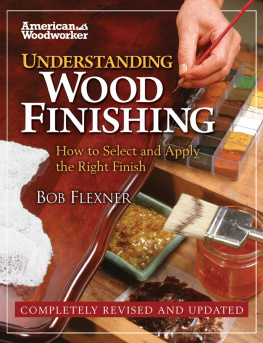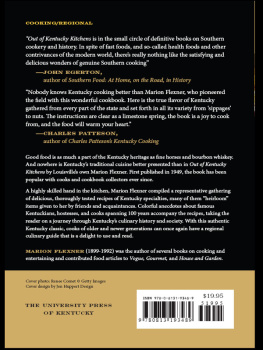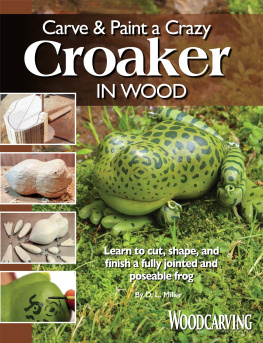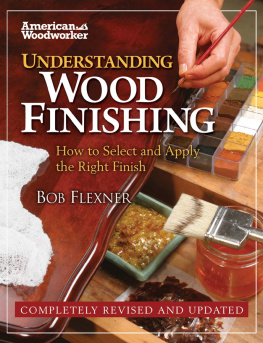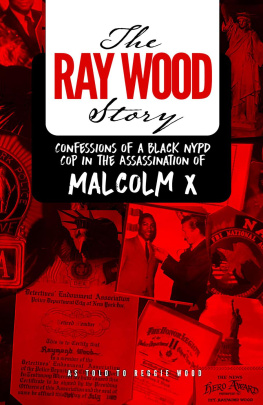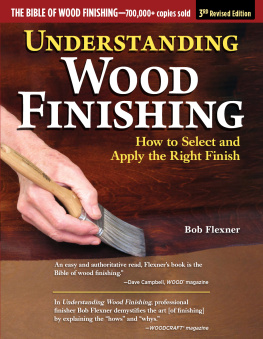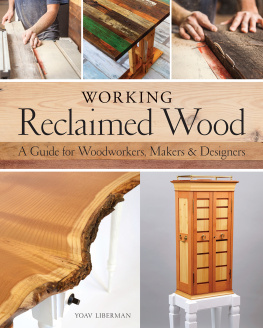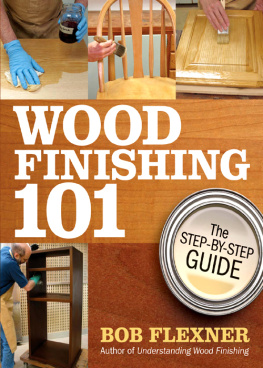Table of Contents
Guide



Contents

Introduction

I learned wood finishing in the mid-1970s from a couple of refinishers with a business down the street from my woodworking shop. Looking back, I realize that I became a pretty good finisher. I learned to spray lacquer and catalyzed finishes, use dyes, glazes, and toners, fill pores, and rub out finishes.
But I was simultaneously reading the woodworking magazines at the time, and gradually I lost my confidence. The more I read about finishing, the more confused I becameuntil by the early 1980s I stopped doing finishing altogether and began farming it out to others.
This continued for a few years, but I wasnt satisfied because I no longer had control. I was at the mercy of others, and I started getting complaints from some of my clients. I became very frustrated.
The dilemma I found myself in didnt make sense. Finishing couldnt be that hard. I had to figure out some way to make sense of it. So I started checking out finishing and refinishing books from the public library, and I redoubled my efforts to find information by reading woodworking magazines. No help. I just became more confused. It seemed that every time I thought I understood some explanation or procedure, I then read something that contradicted it.
The Breakthrough
One day I called my friend Jim, who had a good background in chemistry, to ask if he could explain why alcohol would separate furniture joints that had been glued together with animal hide glue.
Whats hide glue? he asked. Its glue thats made from animal skins, I explained. Oh, protein! he exclaimed. And he proceeded to tell me all about hide glueall the information I had been unable to find in any of the woodworking books Id searched throughhow it worked, how and why it deteriorated, why it bonded without clamps, why alcohol would crystallize it and steam would dissolve it, and so on.
I was dumbfounded. For years I had been looking in vain for accurate information on the hide glue I used for restoring antique furniture. And Jim had known it all alongsimply because he understood the chemistry of protein.
That conversation ended with Jim offering to take me over to the local university engineering library to see what we could dig up. I walked out with an armload of books dealing with hide glue.
Nearby the books on glues were several shelves of books on finishes, including books on the chemistry and technology of stains, dyes, solvents, oil, and wax. Several weeks later I went back and checked out a few of these books.
I dont have a background in chemistry or engineering, so I found these books difficult to understand at first. To further my education, I joined the national association of paint and finish chemists and attended some seminars and conventions. I spent countless hours talking to the chemists who actually make the raw materials used in our finishing products. I found these chemists to be much like the majority of woodworkers Ive met: They love to share what they know with anyone who shows interest.
Slowly I began making sense of finishes. I found it remarkable how understanding each product and how it worked made its application obvious, and how this understanding helped me solve problems when they occurred in my shop. No longer did I have to learn everything by trial and error, a method that is hugely expensive and frustrating and one that requires a long-term commitment to succeed. (If youre not doing finishing on a regular basis, I dont see how you can ever get very good at it by trial and error alone.)
I also found it hard to understand why no one had taken this information and put it in a form that would be useful to woodworkers and finishers. No one had tried to bridge the chasm that divides finish chemists, who understand quite well whats true and not true about finishes, from those of us who use finishes. So I decided to do it myself with the first edition of this book, which was published in 1994.
The Half-Right Rule
The book was extremely successfulbeyond my wildest dreams. But it didnt solve the problem. Published information on finishing is still confusing and contradictory. We are all still encumbered by what I call the half-right rule. Half of what we read or hear about finishing is right. We just dont know which half!
Why is this? Why does the information about wood finishing continue to be so inadequate? Wood finishing is, after all, a very simple craft. It involves little more than transferring a liquid from a container to the wood using a rag, brush, or spray gun. Each of these tools is easy to master. (By way of comparison, think of all the tools you have to master to be good at woodworking.)
I believe there are two explanations. The first is that finishes are chemistrythey are molecules of various sorts put together to make a liquid with specific characteristics. So unlike woodworking and woodworking tools (which are physics), you cant see differences. You cant see the difference between varnish and lacquer, for example, not in the can, not even on the wood. In contrast, you know right away that a dovetail isnt a mortise-and-tenon and that a band saw isnt a table saw (even though it also has a table).
Not being able to see differences makes the second explanation possible and probably inevitable. It is that manufacturers of finishing products have a lot of room to mislead and exaggerate in their product naming and promotion. This results in your being misled and also in those people writing about finishing not knowing what is correct and what isnt. So theres no effective check on a manufacturers natural inclination to make its products appear better and sometimes even different than they actually are.
I am convinced that the understanding of finishing would be far less a chore (and this book much smaller) if there werent so much misinformation to debunk. You may well find that it will take more effort to unlearn what is wrong than to learn what is right.
The Secret Is That There Is No Secret
The reticence of manufacturers to provide good information is perhaps most evident in their reluctance to tell us what ingredients they are using. The excuse is usually that the information is proprietary. The manufacturer doesnt want to give away its secrets.
At one time, manufacturers, and even the individual finishers and painters who made their own finishes, may have had secrets. But finish formulation has become a sophisticated science in the last 100 years. The essential chemistry of almost all finishing products has been thoroughly understood for decades.

There is very little that is new in wood finishes. And what is new has almost always been developed by the large chemical companies that produce the raw materials. These companies make their new information available to anyone who wants it, especially to the finish manufacturers who are potential customers. These raw materials suppliers even provide the formulations for using their products. All the finish manufacturers have to do is mix the ingredients.

